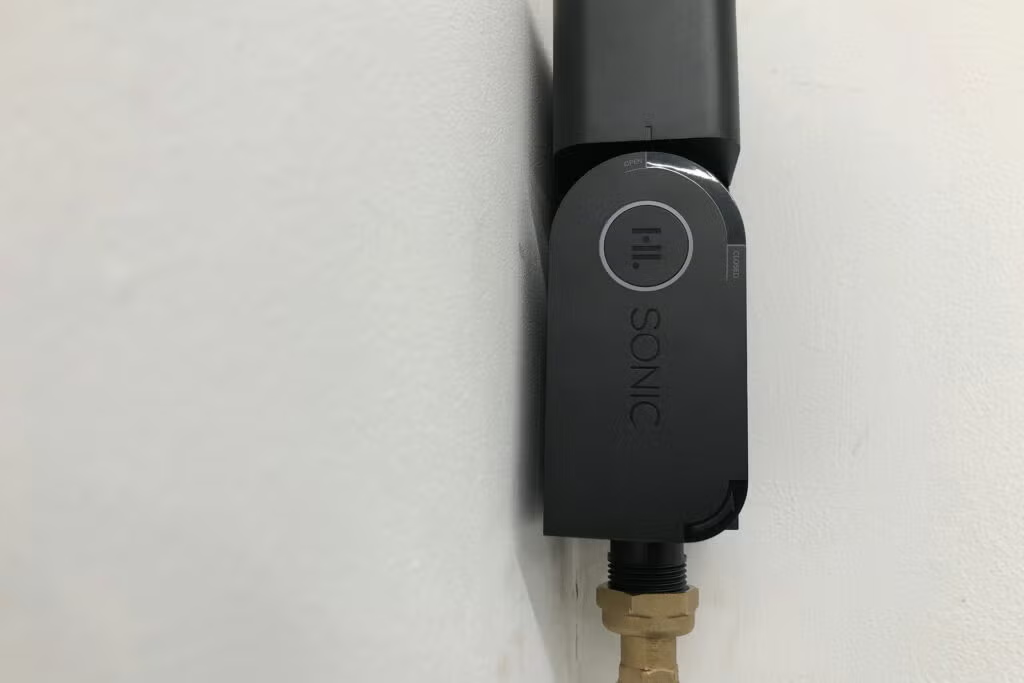No products in the cart.


Introduction: The New Frontier in Sustainable Heating
As the world embraces the transition to sustainable energy sources, the integration of solar thermal panels for buildings heating represents a revolutionary step forward in energy efficiency and environmental stewardship. Solar thermal technology, once considered a niche innovation, has rapidly gained traction as an essential component of modern building design. With advancements in technology and growing awareness of the need for green energy solutions, solar thermal panels are now recognized for their capacity to reduce carbon footprints and dependence on fossil fuels significantly.
In Europe and Asia, where buildings consume over 40% of energy, the call for efficient heating solutions is imperative. According to the International Energy Agency (IEA), building energy consumption is projected to increase by 30% by 2030. This calls for innovative approaches, and solar thermal installations provide an answer, allowing buildings to harness renewable energy directly from the sun. This article explores the technologies available in the market today, their applications in heating buildings, notable case studies, and their integration into smart building systems, aiming to inspire energy efficiency in every structure.
Available Technologies in Solar Thermal Heating
Understanding Solar Thermal Technologies
Solar thermal panels function by converting sunlight into heat, which can then be used directly for heating applications or stored for later use. The two primary types of solar thermal collectors are flat-plate collectors and evacuated tube collectors. Flat-plate collectors are more common, featuring a simple design consisting of a metal absorber plate, insulated backing, and a transparent cover that maximizes sunlight absorption. These panels are effective in moderate climates and are often used for domestic hot water heating.
On the other hand, evacuated tube collectors offer superior performance in colder climates due to their insulation properties. Each tube contains a glass outer and a metal inner tube, creating a vacuum that significantly minimizes heat loss. Recent innovations have led to hybrid systems, combining photovoltaic technology with thermal collectors, allowing for dual benefits—electricity generation and heat production—all from the same installation. For example, integrated PV-thermal (PVT) solutions have emerged as promising technologies that maximize rooftop space utilization.
Latest Technological Evolutions
With ongoing advancements, the solar thermal market is evolving rapidly. The incorporation of AI and smart technology into solar thermal systems is being explored, resulting in improvements in efficiency and user interaction. Adaptive control systems can optimize the use of solar energy by analyzing weather patterns and adjusting the system’s operations accordingly. Innovations such as selective coatings and advanced heat transfer fluids are also improving the efficiency and performance of solar thermal panels.
Additionally, integration with battery storage technology is emerging. By coupling solar thermal systems with thermal storage, buildings can store excess heat generated during the day for use during the night or cloudy days, thus maximizing energy utilization. According to a study conducted by SolarPower Europe, advancements in thermal storage solutions could potentially increase the efficiency of solar thermal systems by as much as 20% over the next five years.
Applications in Heating Buildings
Solar Thermal Systems and heat generators: A Perfect Match
1- Solar thermal systems with boilers:
The main three possible combinations are:
- Solar-Assisted Space Heating: Solar panels preheat water for radiators or underfloor heating, reducing the workload on the boiler.
- Solar Hot Water Heating with Backup Boiler: Solar panels primarily heat domestic water, while the boiler ensures hot water during cloudy periods or high demand.
- Fully Integrated Systems: These systems use a thermal storage tank to store solar-heated water, distributing it to either the heating system or domestic hot water, with the boiler providing supplementary heating.
The main advantages and drawbacks of this configuration are:
Pros
- Energy Efficiency: Solar panels reduce reliance on fossil fuels, cutting energy consumption by up to 60% for water heating and 20% for space heating.
- Cost Savings: Lower utility bills due to decreased fuel usage; financial incentives or subsidies may be available in many regions.
- Sustainability: Reduces carbon emissions by leveraging renewable solar energy.
- Adaptability: Combines well with various boiler types and can be retrofitted to existing systems.
Cons
- High Initial Costs: Installation of solar thermal systems requires significant upfront investment.
- Seasonal Limitations: Solar efficiency is reduced in winter or cloudy climates, increasing dependence on the boiler.
- Space Requirements: Panels and storage tanks require adequate roof and interior space.
- Maintenance Complexity: Requires expertise to maintain both systems effectively.
2- Solar thermal systems with heat pumps:
- Solar-Assisted Heat Pump: Solar thermal panels preheat water, reducing the workload of the heat pump, especially during peak demand or colder months.
- Shared Thermal Storage: Solar panels and heat pumps feed a shared thermal storage tank, which supplies hot water or heats radiators and underfloor systems.
- Seasonal Balancing: In summer, solar thermal panels meet the majority of hot water needs. In winter, the heat pump compensates for reduced solar output.
The main advantages and drawbacks of this configuration are:
Pros
- High Energy Efficiency: The system minimizes reliance on grid electricity, as the heat pump’s energy consumption is reduced by solar preheating.
- Lower Operating Costs: Reduced fuel or electricity demand leads to significant cost savings over time.
- Environmental Benefits: Combining two renewable technologies reduces carbon emissions compared to conventional systems.
- Year-Round Operation: The heat pump ensures consistent heating, even when solar output is low, providing reliability.
Cons
- High Initial Investment: Installation of both heat pumps and solar thermal panels requires substantial upfront costs.
- Complex Installation: Integrating and optimizing the two systems requires specialized design and installation expertise.
- Space Requirements: Both systems require sufficient roof space for panels and indoor space for tanks and equipment.
- Climate Dependency: Solar thermal efficiency is dependent on sunlight availability, making the system less advantageous in regions with limited solar exposure.
Innovative Applications: Real-World Examples
Numerous buildings around the world have adopted innovative solar thermal systems, showcasing the benefits of this technology. A notable example is the “Solarhaus” project in Germany, which integrates solar thermal technology with heat pumps for a highly energy-efficient residential complex. The building consumes 70% less energy than conventional designs and has been recognized as a model for sustainability.
Another exemplary project can be found in the Netherlands, where the “Zonnehuis” project uses a combination of solar thermal collectors and a ground-source heat pump to achieve net-zero energy consumption. The homeowners enjoy reduced heating costs, enhanced comfort, and a home’s carbon footprint significantly lower than the national average. These projects highlight the feasibility of integrating solar thermal technology into diverse building designs while delivering tangible energy savings and environmental benefits.
Integration with Smart Building Systems
Smart Integration for Enhanced Efficiency
The rise of smart building technologies enables the effective integration of solar thermal systems into comprehensive Building Management Systems (BMS). These integrations allow for better control, monitoring, and optimization of energy use across the entire building. By utilizing real-time data and analytics, the BMS can manage energy flows from the solar thermal system, ensuring that heating demands are met efficiently.
For temperature regulation, smart thermostats can communicate with solar thermal panels to adjust room temperatures based on occupancy and external weather conditions. This not only improves comfort but significantly reduces energy waste. Additionally, compatibility with IoT devices enables remote monitoring and control, allowing building managers to assess system performance and make adjustments as needed seamlessly.
Future Trends and Opportunities
The integration of AI in solar thermal systems paves the way for advanced predictive maintenance strategies. By collecting and analyzing performance data, AI can anticipate potential failures and alert facility managers before they occur, ensuring the solar thermal system operates at maximum efficiency. This proactive approach is expected to lead to longer equipment lifespans and lower operating costs.
In Europe, the growth of smart building technologies is outpacing other regions, driven by regulatory frameworks and ambitious sustainability targets. By 2030, at least 70% of commercial buildings in the EU are expected to be equipped with some form of smart technology. This presents a significant opportunity for solar thermal solutions, enabling the energy transition to become more widespread and effective.
Conclusion: Inspiring the Future of Energy
As we advance into an era dominated by sustainability and efficiency, the integration of solar thermal panels for the heating of buildings will be crucial in shaping a cleaner future. With emerging technologies, smart integrations, and practical applications, solar thermal systems are poised to revolutionize building heating across Europe and beyond. The evidence from innovative projects and aggregated energy data supports the viability of integrating these systems in both residential and commercial contexts.
By embracing solar thermal technology, we are not only investing in energy efficiency but also contributing to the global push towards renewable energy. As energy professionals, policymakers, and building owners look for effective solutions to meet rising energy demands, solar thermal systems stand out as a beacon of hope. Let us capitalize on these opportunities and ensure our buildings are not just structures but proactive participants in the sustainable future we aspire to create.
What’s your reaction?
Love0
sad0
Happy0
Sleepy0
Angry0
Dead0
Wink0









